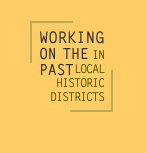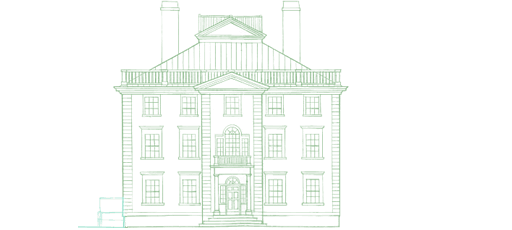
 |
||||||




Choosing Reconstruction as a Treatment
 In
this scenario, Chrisfield—closed in 1993—remains boarded up
and vacant for several years. In 1999, a fire set by vandals destroys
everything but the stone foundation of the main house, the garden wall
and portions of the garage.
In
this scenario, Chrisfield—closed in 1993—remains boarded up
and vacant for several years. In 1999, a fire set by vandals destroys
everything but the stone foundation of the main house, the garden wall
and portions of the garage.
What happens to the house?
In 2020, historians re-evaluate Colonel Chrisfield's involvement in the
important Battle of Rockford Creek. They determine that the 1790s period
of the property is highly significant and merits reconstruction. Based
on the remaining physical remnants, pictorial evidence, and thorough archaeological
investigations, Chrisfield is re-built to its 1790s appearance and opened
to the public. Only Colonel Chrisfield's life is interpreted. A lift to
accommodate individuals with disabilities is added.
<<HOW THE WORK FITS TIME AND PLACE>>
Reconstructing Chrisfield
After the fire in 1999, only remants of above-ground historic
materials are present. The re-built version of the house representing the
1790 occupancy of the original builder is entirely a "depiction" of the 1790s house.
![]()
Reconstruction establishes limited opportunities
to re-create a non-surviving site, landscape, building, structure, or
object in all new materials for interpretive purposes. It is rarely recommended.
<<Key Ideas in the Standards for Reconstruction>>
![]() Do not reconstruct vanished portions of a property unless the reconstruction
is essential to the public understanding.
Do not reconstruct vanished portions of a property unless the reconstruction
is essential to the public understanding.
![]() Reconstruct to one period of significance based on documentary and physical
evidence.
Reconstruct to one period of significance based on documentary and physical
evidence.
![]() Precede reconstruction with thorough archeological investigation.
Precede reconstruction with thorough archeological investigation.
![]() Preserve any remaining historic features.
Preserve any remaining historic features.
![]() Re-create the appearance of the property (substitute materials may be
used).
Re-create the appearance of the property (substitute materials may be
used).
![]() Identify the reconstructed property as a contemporary re-creation.
Identify the reconstructed property as a contemporary re-creation.
![]() Do not execute a design that was never built.
Do not execute a design that was never built.
--------------------------------
